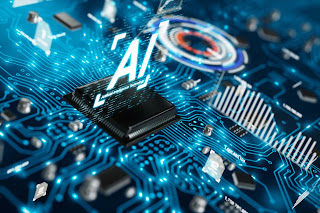The Role of Artificial Intelligence in Predictive Maintenance
Predictive maintenance is the use of data, statistical algorithms, and machine learning techniques to predict when equipment or machinery is likely to fail and schedule maintenance accordingly, rather than maintaining equipment at fixed intervals. The use of artificial intelligence (AI) in predictive maintenance has the potential to greatly improve efficiency, reduce costs, and increase safety in various industries.
One of the most significant ways in which AI is being used in predictive maintenance is through the use of machine learning (ML) algorithms. ML algorithms can be used to analyze large amounts of data, such as sensor readings and equipment usage patterns, to identify patterns and trends that can predict when equipment is likely to fail. This can help to schedule maintenance at the most appropriate time, reducing downtime and increasing the lifespan of equipment.
Another area where AI is being used in predictive maintenance is in the monitoring of equipment and machinery. AI-powered systems can be used to analyze data from sensors, cameras, and other monitoring devices to detect potential issues and predict when maintenance is needed. Additionally, AI can be used to optimize the scheduling and resource allocation of maintenance tasks, which can help to increase efficiency and reduce costs.
AI is also being used to improve the overall safety of equipment and machinery. For example, AI-powered systems can be used to analyze data from sensors and cameras to detect potential safety hazards, such as equipment malfunctions, and predict when maintenance is needed. Additionally, AI can be used to monitor and analyze equipment usage patterns and detect abnormal behavior, which can help to prevent accidents and injuries.
In the manufacturing industry, AI-powered predictive maintenance can improve production efficiency by detecting and predicting equipment failures before they occur, preventing unplanned downtime and reducing maintenance costs. For example, in the automobile industry, predictive maintenance can predict when a part of a car needs to be replaced, and schedule replacement before it breaks down. This can improve the overall performance of the manufacturing process and increase the efficiency of the production line.
In conclusion, the use of AI in predictive maintenance has the potential to greatly improve efficiency, reduce costs, and increase safety in various industries. By analyzing large amounts of data, AI can predict when equipment or machinery is likely to fail and schedule maintenance accordingly, reducing downtime and increasing the lifespan of equipment. Additionally, AI can be used to monitor equipment, optimize maintenance tasks and improve safety, making the overall process more efficient and cost-effective. As the field of AI continues to advance, it is likely that we will see even more applications of this technology in predictive maintenance in the future.



Comments
Post a Comment